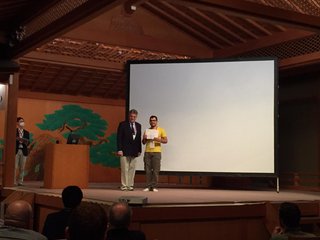From 16 to 20 of September of 2019, I attended the 39th International Conference on Radar Meteorology in Nara (Japan), and it is one of the largest conferences related to radar meteorology. This edition was the largest one with 158 talks and 329 posters which covered a large variety of topics such as new radar technology, data quality control, data processing, cloud microphysics, and of observation of extreme convective systems. During the conference, I also could interact with other radar scientists.
I attended several interesting talks, but two of them were the most interesting for me. Dr Allessandro gave the first one, and during his presentation, he described the advantages of introducing G band radars (110 and 300 GH) for studying cloud microphysics. For example, the combination observations from G and other bands (Ka-, W-) would be beneficial for retrieving microphysical properties profiles of cirrus, mid-level ice, and snow-precipitating clouds. The second one was presented by Dr Kenji Nakamura, where he showed a particular radar set-up for observing the melting layer. In this set-up, he used two Ka-band radars looking at the same part of the cloud. One radar at the top of the mountain was pointing downward, and another one at the bottom was pointing upward. Using this particular set-up, he was able to retrieve an attenuation profile trough the melting layer.
I had my talk during the first day of the conference in the morning. During my presentation, I showed the results of my study about the impact of large snowflakes in the rainfall. For this study, I combined observations from multi-frequency Doppler radars (X-, Ka-, W-band). The results showed a correlation between the intensification of the snow/rainfall rate and the presence of large snowflakes. The results also suggest an increase in the thickness of the melting layer in the presence of large aggregates.
I am glad to have attended this conference for several reasons. I had the opportunity to interact with other researchers/students from the same field. An additional reason was that, at the end of the conference, I received the prize for the second-best talk.
I want to thank the Graduate School of Geosciences for the support, which made it possible to participate in this exciting conference!
José Dias Neto
PhD student
PhD project: Investigating Microphysical processes in ice and snow clouds using novel combination of polarimetric and multi-frequency cloud radars
Institute of Meteorology

